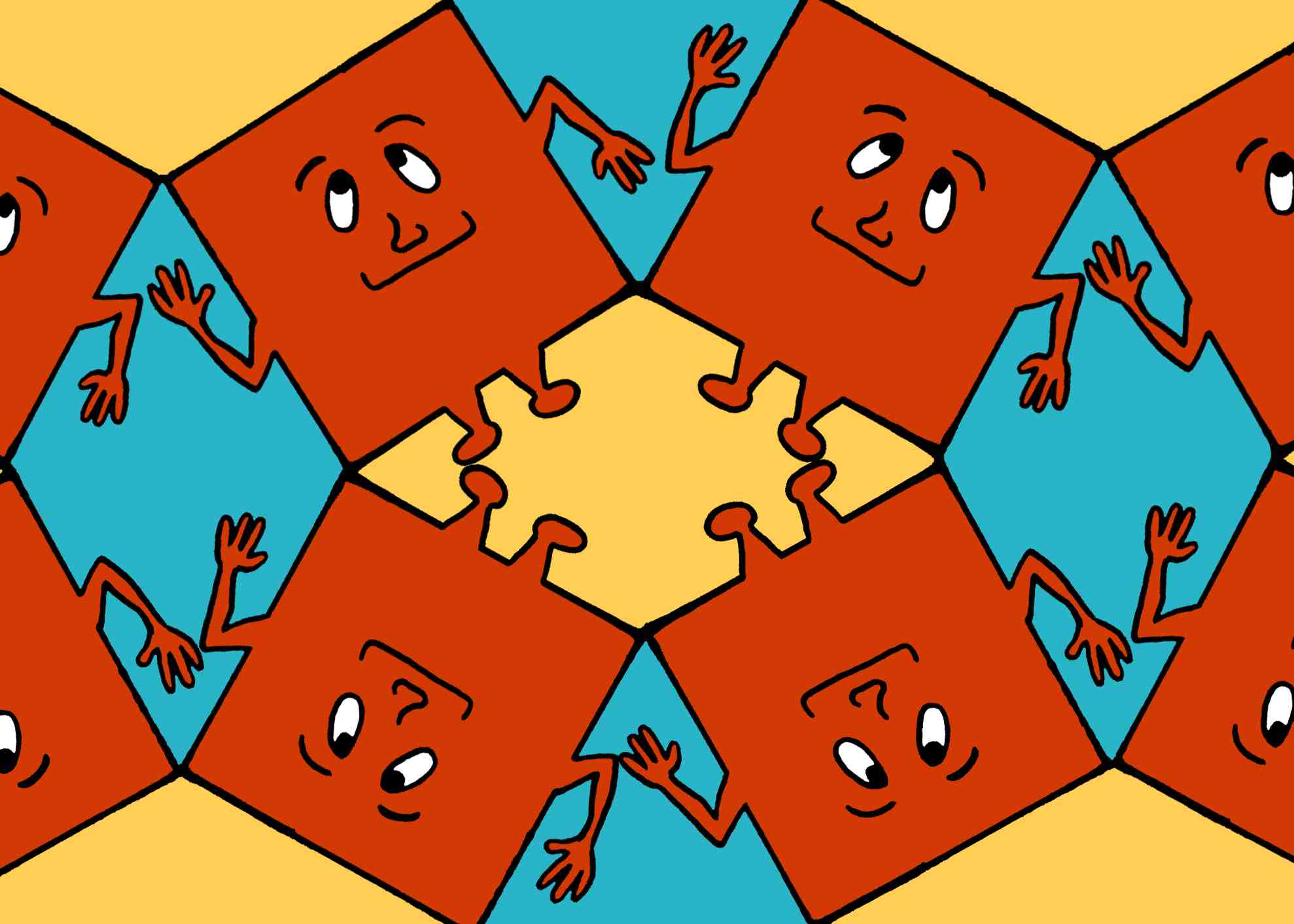

Finally, this figure can be used as a tile to cover the plane. After it is decorated in any way, the triangle should be reflected through one side after another until a hexagon or a square is completed. In this method, one begins with a triangular "primary cell," which may have angles of 60 °, −60 °, −60 ° 30 °, −60 °, −90 ° or 45 °, −45 °, −90 °. (The complete tessellation is shown here, but obviously Escher did it better.)Īnother way of creating interesting tessellations has been called the kaleidoscope method. Finally, the figure is decorated so that it looks a little bit like a ghost wearing boots. Again, these two curves are identical and related by a glide reflection.

Then the bottom left and bottom right sides are replaced with S-shaped curves that represent the feet and legs. (Note: A translation will only work if the two sides are parallel.) One curve bulges outward and the other inward, in accordance with the rule that anything removed from one side must be given back to the other. Next the top left and top right sides are replaced with two identical curves that are related by a glide reflection. The upper curve suggests a head, and the bottom curve suggests two heels. Starting with a hexagon, the top and bottom sides are replaced with identical curves that are related by a translation.

The figure illustrates the process of making tessellations. Escher, thanks to his years of experience, was a master at this last step. This makes it nearly impossible to draw a convincing lizard, but by adding a few embellishments -eyes, scales and paws -a reasonable caricature can be produced.

But every time one side is modified, it is imperative that its corresponding side is modified in precisely the same way. The outline can then be revised so that the result becomes more recognizable. Usually, the result will vaguely resemble something, perhaps a lizard. This procedure can be repeated with other pairs of sides. If a protruding knob has been added to one side, the other side must have an identically shaped dimple. The only rule is that anything that is added to the polygon on one side has to be taken away from the other. (This is not essential, but it is easiest.) Next, choose two sides and replace them with any curved or polygonal path. To create an Escher-style tessellation, start with one of the polygons mentioned above. His tessellations feature cells in the shape of identifiable figures: a bird, a lizard, or a rider on horseback. But Escher discovered that the cells themselves could become an interesting part of the pattern. The visual interest of such a tessellation lies in the pattern as a whole, not in the individual cells. True, tessellations have been used for decorative purposes for centuries, but the cells were usually very bland: squares, equilateral triangles, regular hexagons, or rhombuses. Using your star shape, position it atop the hexagon in order to create and trace three diamonds as shown below.The Dutch artist Maurits Cornelius Escher was, more than anyone else, responsible for bringing the art of tessellations to the public eye. ( See photo)Ĭontinue adding additional star shapes as shown. If you want to create hexagons between your stars, position your star so that one point of one star touches a point of a second star in a parallel manner. Carefully trace around star.Ĭontinue positioning and tracing additional star shapes as shown. If you want to create diamonds between your stars position your star so that two points of one star connect to two points of another. Position star to create a star-diamond tessellation.Place star on paper and carefully trace the outline. I recommend a heavy paper that is still easy to cut with precision. Since the first thing you need is a 6 pointed star, let's start with that shall we?
#Making tessellations how to#
(Note: this post contains affiliate links that may earn commission.) How to Make a 6 Pointed Star
#Making tessellations full#
Read on for the full instructions to learn how to make a perfect six pointed star for star and hexagon or star and diamond tessellation drawings. Plus: these star tessellation ideas are surprisingly adaptable as holiday math art projects! Check out the final photos for holiday ideas.ĭon't miss our newest math art idea: adorable cat tessellations! Not to mention, repeating and rotating mathematical patterns is surprisingly relaxing.Īs I did with our heart tessellations project, I'll share multiple ways to tessellate with a single 6 pointed star shape. Add a little sparkle to your math art projects and STEAM education with star tessellation patterns using a six pointed star! Tessellations are an easy to learn art idea with enough variation possibilities to keep kids interested.


 0 kommentar(er)
0 kommentar(er)
